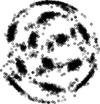You are here: Foswiki>Cosmo Web>CosmoTeaching20102011>MonographCosmo>MonographCosmoOpisShapeUniverse (12 Dec 2025, BoudRoukema)Edit Attach
<< Cosmo
- Course ID:
- Semester/year:
- Erasmus code:
- Course title:
- Department:
- Course groups:
- Course homepage:
- ECTS credit allocation (and other scores):
- Number of contact hours:
- Language:
- Brief description:
- Full description:
- Bibliography:
- Prerequisites:
- Learning outcomes:
- Assessment criteria:
- Practical placement:
- Course ID:
- Semester/year:
- Erasmus code:
- Course title:
- Department:
- Course groups:
- Course homepage:
- ECTS credit allocation (and other scores):
- Number of contact hours:
- Language:
- Brief description:
- Full description:
- Bibliography:
- Prerequisites:
- Learning outcomes:
- Assessment criteria:
- Practical placement:
Course ID:
- 0800-WZAT-3
Semester/year:
- summer 2025/2026
Erasmus code:
- 13.7
Course title:
- Cosmic topology Name in Polish: Topologia kosmiczna
Department:
- Faculty of Physics, Astronomy and Informatics
Course groups:
(in Polish) Astronomia s2. Wykłady monograficzne do wyboru (in Polish) Fizyka s2. Wykłady monograficzne do wyboru (in Polish) Wykłady monograficzne do wyboru (wszystkie oferowane w danym roku akademickim)Course homepage:
ECTS credit allocation (and other scores):
- 2.00 (some years this may be 3.00 OR 5.00; differs over time)
Number of contact hours:
- 20
Language:
- English
Brief description:
- Formal and intuitive introduction to the comoving spatial section of the Universe according to the Friedmann-Lemaitre-Robertson-Walker model, i.e. as a constant curvature 3-manifold, primarily focussing on observational methods of measuring cosmic topology and briefly covering the theory of topological acceleration
Full description:
- space as a 3-manifold: curvature + topology
- curvature and the metric, the role of the Einstein-Hilbert equations in hot big bang cosmology
- comoving coordinates, scale factor, local cosmological parameters, Friedman equation, fluid equation, acceleration equation
- multiply connected 3-manifold, fundamental domain, apparent space
- 3-dimensional empirical approaches
- 2-dimensional empirical approaches: identified circles principle, cosmic microwave background
- topological acceleration
- beyond the FLRW model: the Earth exists
Bibliography:
- Liddle, A.R., 2000, Introduction to modern cosmology, 2nd edition if possible
- Roukema, B.F., 2000, The Topology of the Universe, Bull.Astron.Soc.India 28 (2000) 483, arXiv:astro-ph/0010185
- Peebles, P.J.E., 1993, Principles of physical cosmology, Princeton: Princeton University Press
Prerequisites:
required:
- elementary algebra; calculus; three-dimensional Euclidean geometry; Newtonian physics;
recommended:
- basic astronomy; spherical astronomy; extragalactic observational astronomy; differential geometry; special and general relativity
Learning outcomes:
* knowledge: geometrical, topological, physical, algebraic and numerical familiarity with the present state of empirical knowledge about the whole of the observable Universe and common definitions of the size of the Universe * knowledge: awareness of the role of open access to scientific empirical data and theoretical tools and FLOSS software for scientific analysis in modern scientific research (FLOSS: free/libre/open source software) * skills: the ability to make elementary geometrical calculations for the main cosmological distance definitions for the three signs of curvature * social skills: experience in subjecting one's learning to potentially intensive peer review * see also 0800-M-SHAUNI K_W, K_U, K_K codesAssessment criteria:
* Form of the exam: to be negotiated.Practical placement:
- Initial steps towards observational cosmology research.
Edit | Attach | Print version | History: r3 < r2 < r1 | Backlinks | View wiki text | More topic actions
Topic revision: r3 - 12 Dec 2025, BoudRoukema
 Copyright © by the contributing authors. All material on this collaboration platform is the property of the contributing authors.
Copyright © by the contributing authors. All material on this collaboration platform is the property of the contributing authors. Ideas, requests, problems regarding Foswiki? Send feedback
